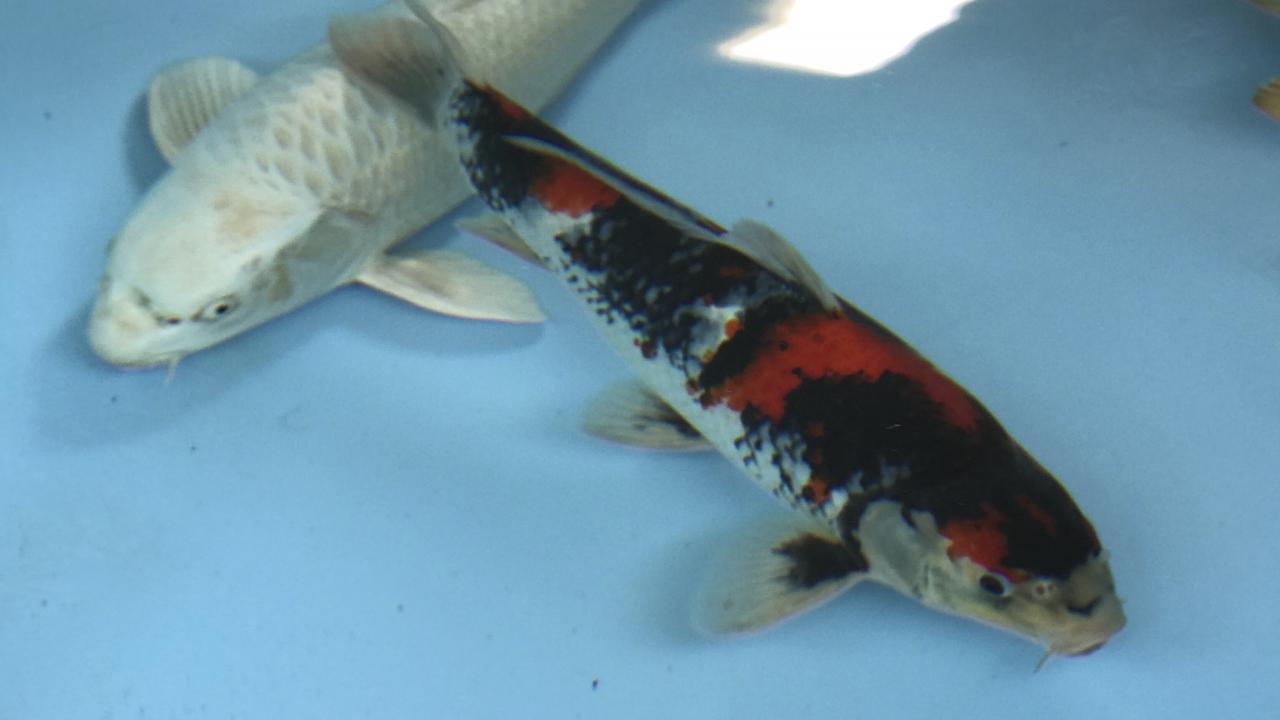
Koi refugees
Thirty-three koi swim in sanitized tanks at the UC Davis Center for Aquatic Biology and Aquaculture (CABA). They are refugees from fires that ravaged hundreds of thousands of acres in Santa Rosa and throughout the wine country, destroying more than 6,000 homes.
“In some cases, the fish were rescued from homes that were completely burned down, so the koi are all that are left,” says CABA Director Linda Deanovic, lifting a tank lid to peer inside at a golden, incandescent koi.
The fish were rescued by members of the UC Davis Veterinary Emergency Response Team (VERT), who are accustomed to saving horses and other livestock. But the explosive nature of the wind-whipped fire—which struck after midnight on Oct. 9—presented new challenges.
“In many cases, there was no time for people to save animals that couldn’t be rounded up quickly, like fish,” Deanovic says.
The fires knocked out power to thousands of homes in the area, and fish have trouble surviving in ponds without the aeration and water filtration that electricity provides. While performing search and rescue, VERT members came upon an ash-covered pond and were determined to save the dying koi inside. They called Dr. Esteban Soto, a fish veterinarian with the school, who contacted Deanovic to see if CABA would have capacity to house and feed the koi refuges.
Six hours later, 10 koi pulled up to CABA in the back of a pickup truck.
A crafty transport
How do you save fish? The team—led by Dr. John Madigan—quickly improvised. They tied down a water trough in the back of Madigan’s pickup and lifted the koi from the pond to the truck with a net. They were concerned that the fish couldn’t survive the two-hour trip to campus without oxygen in the water so they rigged up aeration using a tire-pump air compressor.
“They plugged the compressor into the cigarette lighter and the compressor delivered plenty of air to the fish,” Deanovic explains.
The team tied plywood over the top of the trough to keep the fish from jumping out.
Back in the fire zone
Word spread that VERT was saving fish, so other homeowners asked if the team could check on their koi, too. So far, 33 fish have been transported to safety, some of them more than 30 years old. CABA is preparing tanks in case there are more fish to save.
With the help of Deanovic and her team, Dr. Soto will monitor the fishes’ health and make sure they are acclimatizing to the tanks. CABA will house the fish for up to three months while personnel seek good, temporary housing until the fire victims can rebuild their homes.
Meanwhile, VERT is still on duty, rescuing animals. So far, UC Davis has taken in two llamas, 10 horses, 19 cats and 33 koi.
“Who would’ve thought that the largest group of animals we treated from the fires would be fish,” Dr. Madigan says.
Rob Warren, communication and marketing officer with the UC Davis School of Veterinarian Medicine, contributed to this report.
Here's more information on the rescue.
Media contact(s)
Diane Nelson, College of Agricultural and Environmental Sciences dean's office, 530-752-1969, denelson@ucdavis.edu
Linda Deanovic, Center for Aquatic Biology and Aquaculture, 530-752-8160, ladeanovic@ucdavis.edu